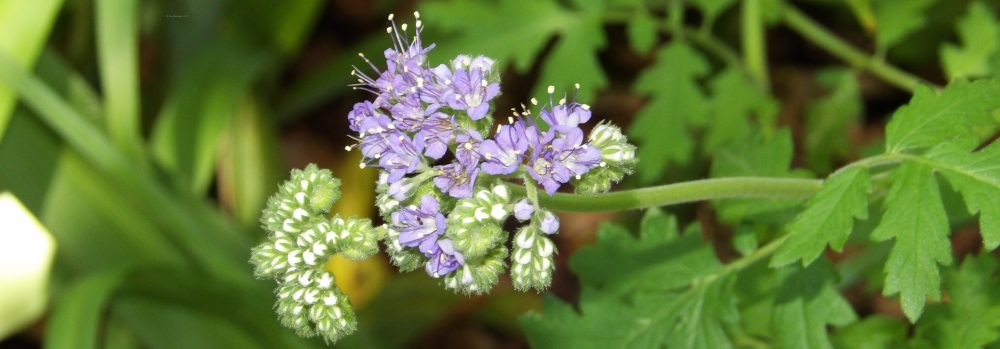As the 2014 growing season slows, it’s harder to showcase blooming things for the garden. Berries? Sure, lush in their ripeness. Beautiful foliage? Yep–in abundance in the trees and on the ground. Interesting seed pods? All over the garden, the remains of spent blooms. But blooming things are scarcer and scarcer, even in temperate Austin, Texas. Today though, I’m joining with Gail at clay and limestone to mark another celebration of wildflowers on this fourth Wednesday of November.
Even after our first light frosts Tropical Sage, Salvia coccinea, blooms.
 Vibrant scarlet blooms brighten my garden in these shorter days of autumn into winter.
Vibrant scarlet blooms brighten my garden in these shorter days of autumn into winter.
Salvia species of all sorts flowered reluctantly in my gardens this year. I’m not sure why, though I know that many salvia require lots of sun and that’s something my gardens see less and less of. The Tropical Sage is an exception to that full-sun rule. These little herbaceous perennials bloom beautifully, in full sun,
These red Tropical Sage begin flowering mid-to-late summer and have bloomed through the fall. In my gardens, I grow more of the white bloomers than the red. The white Tropical Sage blooms late spring through early fall and during a mild winter, throughout. Generally, they’ll bloom in winter, until a hard freeze nips them, which I should add, is the norm. (My property also is in central Austin, so my garden benefits from a heat-island effect and often doesn’t get as cold as outlying areas.) The red form blooms later for me–late summer into fall and also during winter if conditions allow. Drought hardy, prolific re-seeders, and deer resistant, Tropical Sage are also good nectar sources for pollinators.
Oh and they’re just darn pretty!
Tropical Sage are great to tuck into spots of the garden where there are limited choices, or where you want to fill in space. I like to group several together in close proximity, like this bunch of almost finished white bloomers,
This gives a larger shrub effect, but without overpowering surrounding plants.
Tropical Sage are moderately fast growers. I can plant seedlings like these in late fall or even winter,
…and as long as they’re well-mulched, they come back ready for action in late spring. These are seedlings that I transplanted about a year ago.
Tropical Sage are native perennials to the southern coastal areas of the United States, including Texas and annuals in most other places. A great perennial native wildflower–plant them now (in their native range) or next year. To celebrate wildflowers and native plants in the garden and to see what wildflowers other gardeners grow, take a turn from this busy holiday weekend and travel on over to clay and limestone.
Wildflowers work!











I’m happy to see these beauties getting their moment in the spotlight here.
Tropical sage have functioned as a mental health prop for me as a gardener. They bloom where other plants will not, resist the deer while doing so, and tolerate multiple prunings and transplantings with aplomb. There have been times when their tiny pops of color were the only thing that kept me from throwing in the trowel.
I can’t imaging gardening in Texas without them!
LikeLike
Ditto, ditto, ditto. Tropical sage is just such an easy plant. I have so much of it, but I never grow tired of its lovely white and brilliant red blooms. I’ve “pruned” by breaking off stems and it doesn’t care. I like that and I need that kind of plant in my gardens!
LikeLike
The birds must have planted mine and I am always so grateful for their presence. They just kind of appeared one year. I like them a lot.
LikeLike
Birds do that–and I’m glad for their contributions to our gardens. I recall that a long-since-moved neighbor gave me my first ones–red. They hybridize, so I ended up with lots of white and I love them. But the red are quite spectacular!
LikeLike
Oh Tina be still my heart. I adore your wildflowers in TX and this one is a beauty.
LikeLike
I love our Texas wildflowers too! I dearly wish more home owners and gardeners would use them. One convert to native plants at a time, I guess!
LikeLike
Aren’t the Salvias wonderful?! And the pollinators love them, too. Obviously, I can’t grow this one as a perennial in Wisconsin, but S. nemerosa and some of the hybrids are popular around here–with gardeners and pollinators, alike.
LikeLike
There are so many great salvia varieties for so many situations. I looked up the S. nemorosa–wow! That’s a beauty! I looks a bit like the S. farinacea that we can grow here. I need to leave my plants alone–not move them and give them more time to establish. That’s one of the things I’m not so good about with my gardens in recent years–patience!
LikeLike